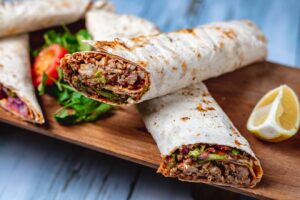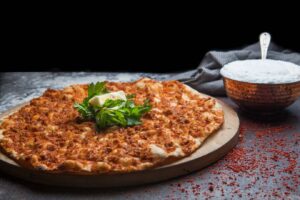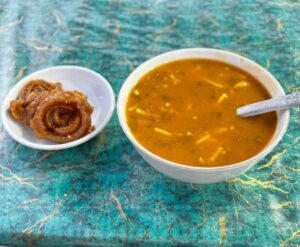The Food & Recipes Blog
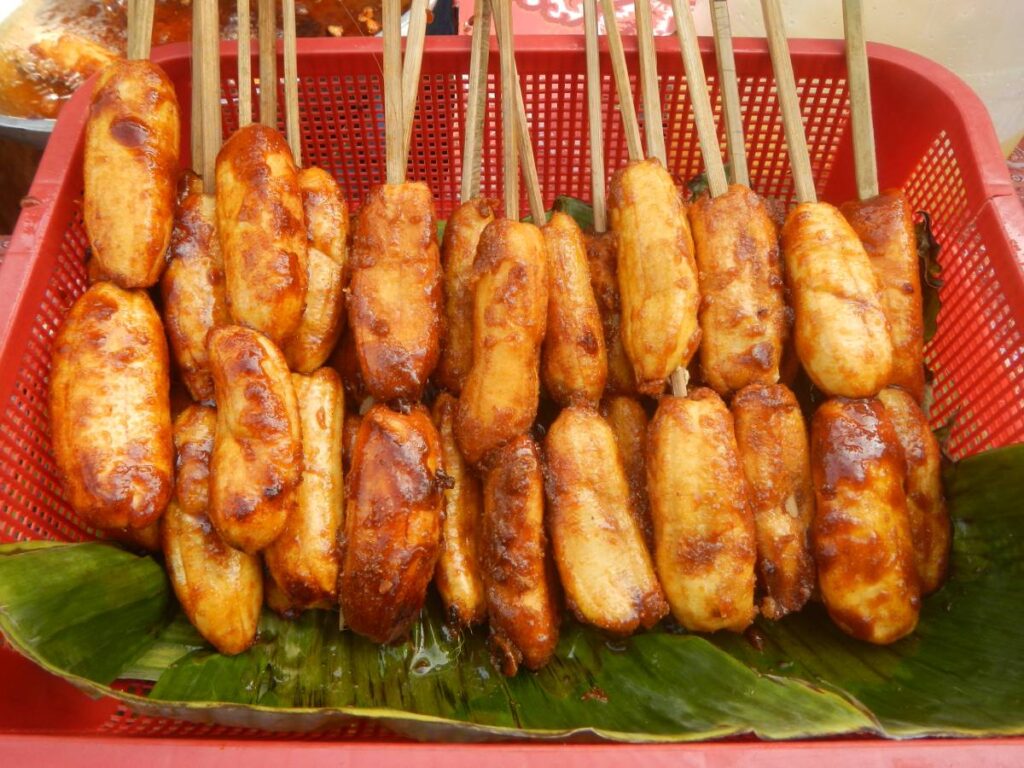
Filipino Banana Cue: A Caramelised Classic
Filipino street food is a colourful snapshot of the country’s diverse culinary culture, with local ingredients, community customs and plenty of flavour crammed into each bite. A nostalgic favourite of its many beloved snacks is banana cue, a simple but indulgent snack of deep-fried caramelised bananas served on a stick by street vendors across the Philippines.
Banana cue is not merely a snack; it is a cultural symbol. It can be found in busy markets, school canteens, and roadside stalls and is often consumed mid-afternoon during merienda (snack time). Get ready to learn about the past, present, and ever-rising popularity of banana cue, its contribution to the Filipino street food scene, and the charming reason why it will forever be loved by everyone, regardless of age!
Whether new to Filipino cuisine or revisiting a cherished childhood treat, this guide offers a comprehensive look at a comforting and iconic dessert.
What is Banana Cue?
Banana cue (or “banana cue” as it is sometimes written) is a popular street food in the Philippines. It consists of deep-fried saba bananas covered in caramelised brown sugar, skewered on bamboo sticks for easy consumption. Despite the name, it’s not barbecued (as “cue” might imply); it’s closer to a barbecue-style presentation.
Key Ingredients
- Saba bananas – A starchy, firm variety of banana native to the Philippines.
- Brown sugar – For the rich caramel coating.
- Oil – Typically, vegetable or coconut oil for deep-frying.
- Skewers – Bamboo sticks for serving and easy handling.
This humble snack is often sold for a few pesos per stick and is a common sight outside schools and offices, especially in the afternoon.
The Origins of Banana Cue in the Philippines
While it is difficult to trace exact dates, banana cue appeared as part of the post-war urban food culture from the mid-20th century onwards. As vendors and other informal eaters proliferated, cheap, homegrown snacks such as this one became lunch or snacks for both working Filipinos and students.
Saba bananas grew plentifully across the archipelago and became the ideal base for creative local snacks. As sugar cane is also a major agricultural product in the Philippines, caramelising the bananas was practical and economical.
The name’s resemblance to “barbecue” is believed to reflect the influence of American English during the post-colonial period, but its cooking method is uniquely Filipino.
Why Banana Cue Remains Popular Today
1. Accessibility
Banana cue requires only a few ingredients and is quick to prepare. Its widespread availability, particularly in rural towns and city streets, makes it an accessible snack for all income levels.
2. Affordability
A stick of banana cue typically costs less than a full meal, making it a go-to option for those needing a quick, budget-friendly snack.
3. Nutritional Value
While considered a treat, saba bananas are rich in potassium, dietary fibre, and vitamins B6 and C. When not overly sweetened, banana cue offers modest health benefits compared to processed snacks.
4. Cultural Significance
Banana cue is deeply embedded in Filipino culture. It’s not just food—it’s part of childhood memories, school breaks, and bonding moments among friends.
How to Make Banana Cues at Home
Want to enjoy this Filipino street food from your kitchen? Here’s a basic recipe that replicates the authentic flavour.
Ingredients:
- 6 ripe saba bananas (not overripe)
- 1 cup brown sugar
- 2–3 cups cooking oil(optional)
- Skewers
Instructions:
- Heat the oil in a deep pan over medium heat.
- Add the bananas and cook for 2–3 minutes.
- Sprinkle brown sugar over the bananas. Stir gently as the sugar melts and coats the bananas.
- Fry until the bananas are golden and the sugar has fully caramelised (about 5–7 minutes).
- Remove and drain on paper towels.
- Skewer 2–3 bananas per stick, and let them cool slightly before serving.
Tip: Some vendors lightly coat the bananas with cornstarch before frying for a crispier texture.
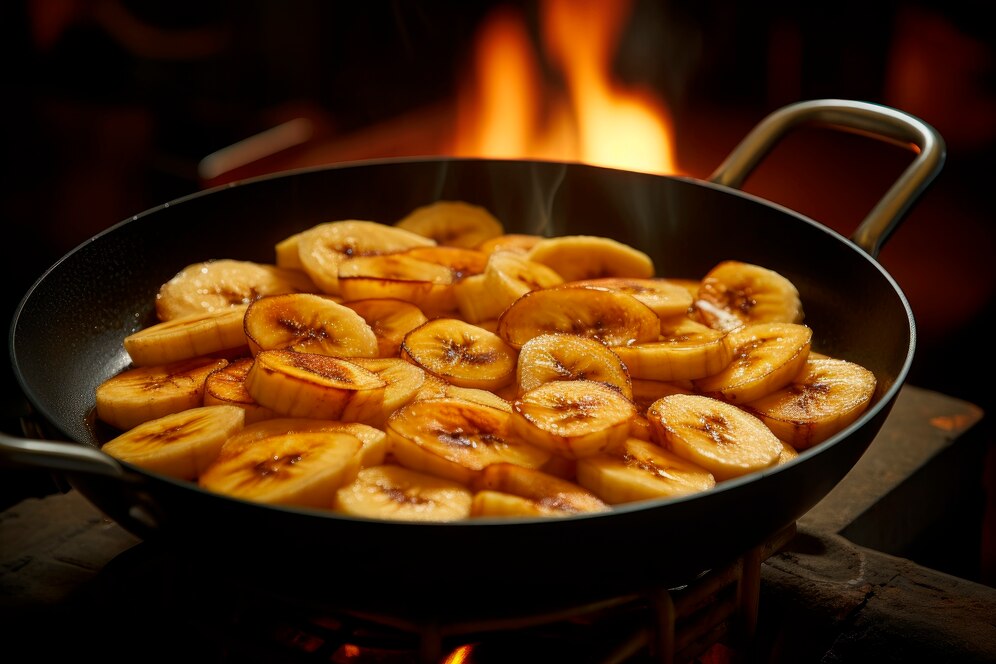
Banana Cue vs. Similar Filipino Snacks
Filipino cuisine features several banana-based snacks, but banana cue has its distinct character.
| Snack Name | Description | Key Difference |
| Turon | Banana wrapped in a lumpia wrapper and fried with sugar | Crunchy wrapper |
| Maruya | Banana fritters, usually flattened and dipped in batter | Pancake-like texture |
| Pritong Saging | Simply fried banana slices | No caramelised sugar |
Each variation offers a different take on the same key ingredients—saba banana—highlighting the versatility of this staple fruit.
Street Vendor Culture and the Banana Cue Experience
Walking through a Filipino neighbourhood in the late afternoon, you’ll likely catch the unmistakable aroma of caramelising sugar. Vendors, often with makeshift carts, fry up banana cue in batches and serve them hot off the pan.
The experience of buying from a street vendor adds to the snack’s appeal:
- It supports local micro-entrepreneurs.
- The food is served warm and fresh.
- It’s a social ritual where customers often engage in light-hearted conversations while waiting.
In many communities, the banana cue vendor is a familiar figure—part of the daily rhythm of life.
Modern Twists and Innovations
While the classic version remains widely loved, modern takes on banana cue have emerged, especially in Filipino fusion restaurants and food fairs.
Some contemporary variations include:
- Banana cue with vanilla ice cream – A hot-and-cold dessert fusion.
- Mini banana cue bites – Perfect for party trays.
- Spiced caramel banana cue – With cinnamon, nutmeg, or chilli flakes.
These creative approaches demonstrate how this traditional snack inspires innovation while preserving its roots.
Nutritional Considerations
Although banana cue is undeniably indulgent, its nutritional value depends on portion size and preparation.
Per stick (approximate values):
- Calories: 180–220 kcal
- Sugar: 15–20g
- Potassium: ~400mg
- Fat: 8–10g
To make it slightly healthier:
- Use less sugar or an alternative like muscovado.
- Pan-fry instead of deep-frying.
- Serve without skewers and eat with a fork to control portions.
Filipino Banana Cue Abroad
As the Filipino diaspora has expanded worldwide, so has its food. Banana cue is now found in:
- Filipino restaurants around North America, Europe and the Middle East
- Street food markets and cultural festivals
- Food channels on YouTube and other food vlogs
It has become a culinary ambassador, introducing the world’s foodies to Filipino street food’s vibrant, soulful nature.
A Classic That Captures Filipino Soul
From its humble ingredients to its memorable flavour, banana cue is more than a snack—it’s a sweet slice of Filipino culture. Whether purchased from a street cart or prepared at home, it provides warmth, comfort, and a smattering of tradition.
As the world tastes its way through Southeast Asia, banana cue from the Philippines is a great beginner dish. If you haven’t given it a whirl yet, now’s the time to do so.
Ready to experience Filipino street food culture for yourself? Try making banana cue at home or visit your local Asian market to find saba bananas. Don’t forget to share your banana cue creations online—and tag your Filipino foodie friends!




